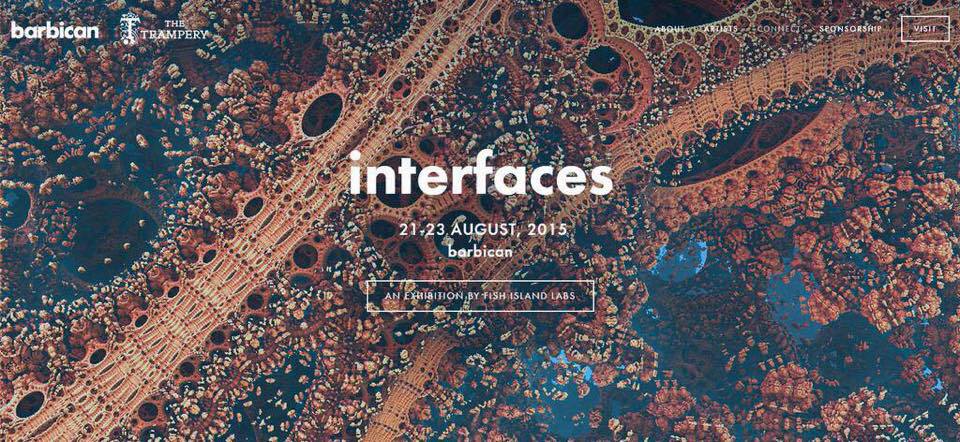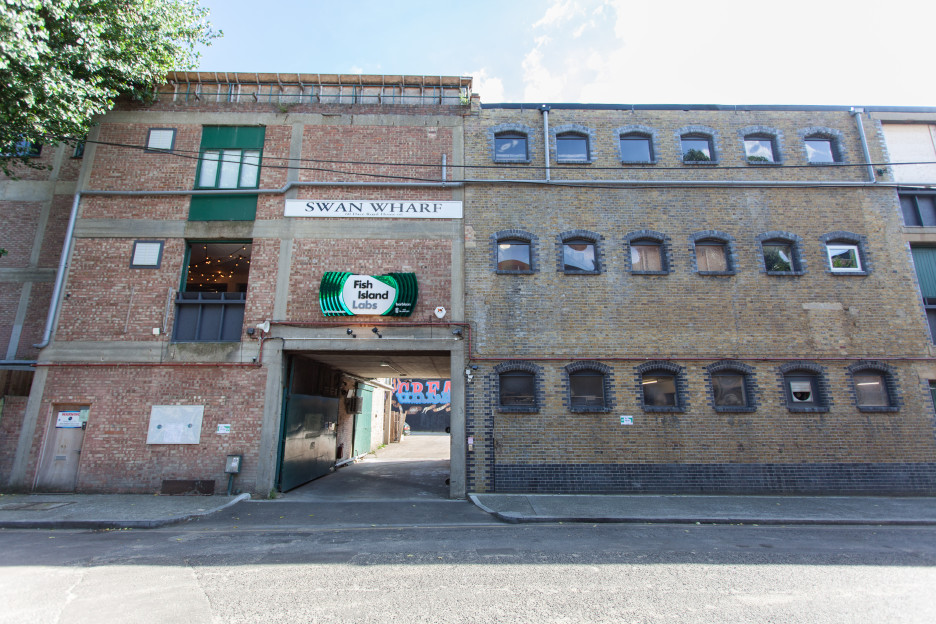 Stories
Stories
FRACTAL ART ØØØØ
The story of this young Italian artist based in London proves that supporting young talents it’s always worth it.
Matteo Zamagni is a 23 years old from Rimini and he was chosen from the Barbican Centre to be part of the Fish Island Labs project. This art laboratory located in Hackney Wick (London) was born from the joint forces of the renowned cultural centre – The Barbican – and the social enterprise The Trampery. The project’s core concept aimed at putting together fifty young artists in a iconic studio space with the objective of exploring the many artistic possibilities created by the mix of arts and new technological tools, ranging from sculpture to digital art. After 12 months of hard work, the Fish Island Labs’ artists have summed the ethos of their artistic and technological experimentation in an exhibition held in August at the Barbican Centre, Interfaces.
Undoubtedly, Matteo’s installation Nature Abstraction was the highlight of the exhibition, attracting the attention of enthusiasts and experts. In the wide landscape of media art, he has chosen a very niche avant-garde, virtual reality. By exploring the mathematics of fractals and complex 3D graphic techniques Matteo successfully managed to turn the mathematical representation of organic forms into visual art. I had already seen some of Matteo’s previous projects, but my curiosity grew even more when I arrive at the exhibition and I saw the long and patient line of people waiting to try the Oculus Rift. I was completely blown away by his installation and I realised the real extent of fractal art and the artistic experience it can recreate.
I met Matteo to find out more about how he started his artistic career, which technologies he uses and what are his future plans.
Tell us about your experience in the Fish Island Lab.
Sharing such a space with artists with similar interests to mine has been absolutely incredible. Even though, each individual artist is a blend of interdisciplinary skills ranging from shadow puppetry, sculpture, data visualisation, fashion and fine art, there was always something to learn from each other. Moreover the Lab hosted many workshops, collaborations and events, making it a great opportunity for us all.
What about your installation Nature Abstraction for the Barbican Centre exhibition?
Interfaces was undoubtedly one of the most constructive and exciting experiences of my life so far. After a long time and hard work it was amazing to see my installation Nature Abstraction complete. When something starts from an abstract idea, making it real it’s an indescribable feeling. And it was even more exciting to see the reaction of the public walking into the cube and trying the Oculus Rift. In fact, the installation is designed in order to recreate a contemplative environment by using a cube whose faces are projected with images of organic forms filmed through a microscope; these are merged with analog visual effects (such as refraction and reflection, or other physical properties of light) and then filmed again. In this way, the viewer is invited to enter the cube, wear the Oculus Rift and explore a surreal 3D world created mathematically.
In my opinion, art exceeds its limits more than ever in this new digital era. New technologies facilitate the multisensory interaction of the observer, allowing the artist to fully express himself.
Why did you choose virtual reality and the mathematics of fractals ?
With my installation Nature to Abstraction I wanted to create an environment in which the viewer could ” switch off” for 10 minutes and enter a surreal world made up of 3D fractals. Essentially these are a 3D representation of mathematical formulas that visually lead back to biological and architectural forms. The idea of using the Oculus Rift along with other electronic equipment has been very useful to amplify the experience for the observer. In fact by stimulating sight and hearing it is possible to almost induce the audience in a state of trance.
What technologies do you use?
The tools always vary from project to project. Many softwares are available online for what concerns video editing, special effects, 3D, realtime graphics, photo-scanning etc. In addition, there are auditory sensors that detect audio frequencies or other types like the Kinect or the Leap Motion that trace back the body movements through infrared sensors. Some of these tools are relatively cheap and they offer endless possibilities. With regards to my work, the abstract idea always comes first. Then I look for the tools to develop and implement my idea in the physical world. I am currently exploring many 3D realtime and offline softwares such as Cinema4D and Houdini (also used for Visual FX in Hollywood productions), specific softwares for 3D fractals, photogrammetry and other softwares for vj-ing and projection mapping.
How would you define the artistic scene in which your work fits into?
From my point of view: it’s FANTASTIC.
It’s a digital movement, born from the internet and from the disclosure of artistic practices online. There is a huge online network of media artists gathered discussing and sharing topics of interest.
What are you working on at the moment and what are your future plans?
I have lots of projects going on at the moment. I’m developing a second installation which aims recreating an OBE (Out of Body Experience) literally projecting the audience elsewhere. I’m still in the initial stage and it will take at least a year to develop properly. Moreover I’m trying to put together an online collective of digital artists which will consist of a platform where they’ll be able to share ideas, collaborate and express concepts in relation to astral worlds and the relationship between science and spirituality, a dear topic to many artists around the world.
| Celine | The Factory |


